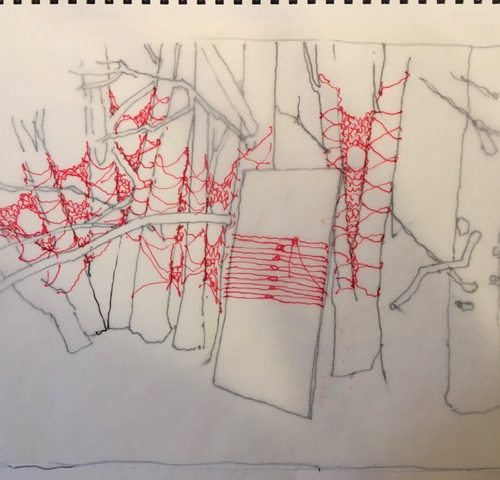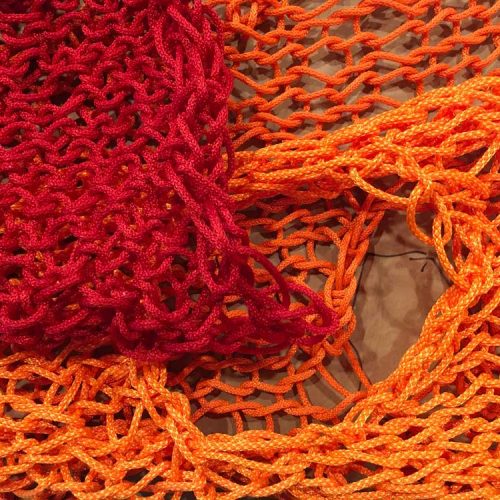
I was invited to be part of the Hindsight 20/20 exhibition at the Kent Museum, Calais, Vermont from Sept 10 – October 10th, 2021. Continuing the work I made for the Rokeby Museum in the Mending Fences project, I once again returned to history to find a thread to follow at the Kent Museum.

The term footprint has a far different meaning to us in contemporary society than it did to Abdiel Kent in the 1820’s. As an entrepreneur in his 20’s he learned to make shoes in Massachusetts and returned to VT to start his own shoemaking business and to open a general store in, what is now Kents’ Corner. He ran the shoemaking operation, making handmade shoes and boots into the mid 1840’s. He employed a number of men and women from the community in this enterprise. His shoes were sold locally and when shoemaking became mechanized he could no longer compete price wise and he closed down that business. This story is interesting as we face the same issues today, as technology and robots replace people. In those days a footprint was literally the mark in the soil or dirt brought in from muddy boots.
What constitutes a footprint in contemporary terms? “Today it‘s less likely to refer to the tread mark your sneaker leaves in the dirt, and more to the imprint you’ll leave on the planet”, writes William Safire, NY Times, 2008.

Today we think about our footprint in a far larger context as it refers to the impact we have on the earth. We think about our carbon footprint related to air travel or the gas burned up in driving. The impact of our daily choices in such things as hanging out the clothes on a clothes line to dry vs throwing them into the dryer. I am always trying to buy things that have less plastic packaging. How do the choices I make contribute to the solution rather than the problem? Should I order online or support a local store? Where do I continue to walk over things, that could make a difference?
The other interesting thing about literal footprints is how the soles of shoes have changed. What once consisted of a piece of leather nailed or sewn onto the heel and footpad is now made of many different materials including rubber, foam, polyurethane, plastic or cork, to name just a few. The treads make fascinating patterns. Some are fern like, some geometrical, some worn from wear or fresh and bold. Velcro has also become part of shoes replacing laces.
Over 30 years ago when my children were being born, I did a series of metaphorical portraits of my clothing. Thinking about my different identities, I drew and painted images of my art making clothes covered with paint and ink, my dress up jackets and skirts, mother and daughter coats, etc. These morphed into clothes stacks and laundry baskets full of a family of clothing.
Returning to this idea, (it’s interesting that after making images for over 50 years old ideas take on new forms) I created the Footprint Series. A collection of nine portraits of my shoes, choosing the ones I wear the most and have a distinctive use and form. I wanted both the form of the shoes with the footprints they create as a vehicle to bring us to consider our individual and collective impact on the earth. As I’ve been primarily working on black paper since the start of 2021, I decided to continue that. Dirt was collected from the trails I walk on, my gardens and pathways and ground separately. This was added to an ink base that would print. After each colored pencil drawing was done. I rolled out my ink, put on my shoes, stamped my feet in the ink and walked onto the paper, making the patterns I was interested in.

My two granddaughters are six and three years old. Thinking about how our footprints will affect the next generation I wanted to include them. On one of my visits, I brought my materials and did the process with them.
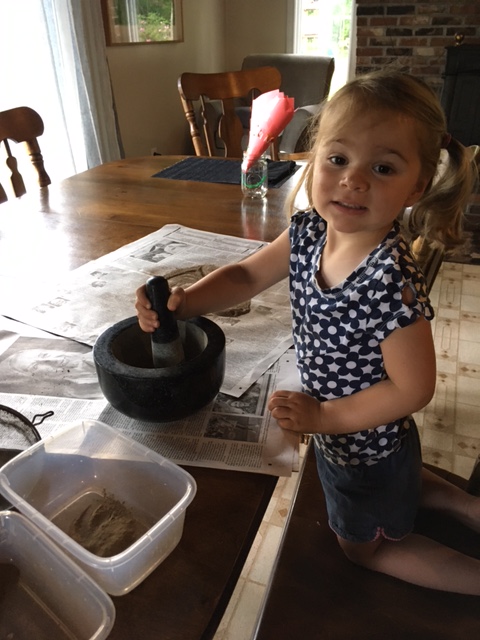
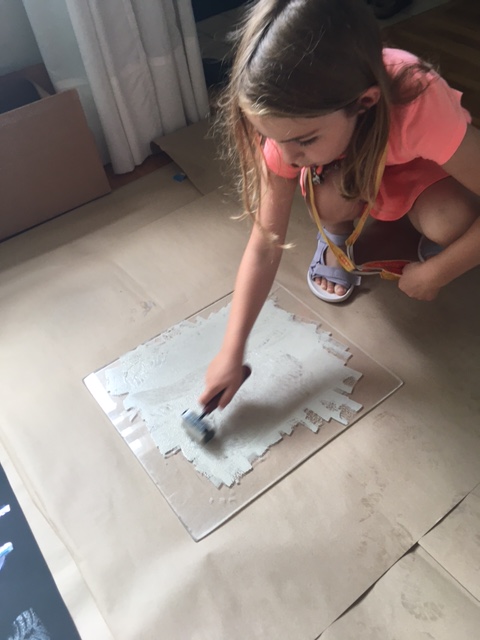


Our shoes are a connecting point to this beautiful planet we life on. This series has made me think more deeply about the materials the shoes are made of, how I acquired them and how or where they were made. I am conscious of the millions of decisions that we make in our lives and how they impact the earth. Although no one decision will change the trajectory we are on, collectively we may be able to change the tide one small decision at a time.
Antique Child’s Boot Project

Nel, one of the curators of the show, brought me an antique child’s boot that she had found in the wall of an old house where she lived in Kents’ Corner. It was about the size of my three year old granddaughters’ shoes. The idea of her running around in this boot was mind boggling. I decided to make a dry point etching that was virtually life size. The image was drawn into a piece of plexiglass with a very sharp needle. I inked it with a deep brown ink so as to capture the actual tone of the leather. As I was considering which paper to print on, I remembered some old paper I had inherited from my father. I pulled it out of my flat files and the synchronicity was amazing.
 57 sheets of Hayle’s Handmade paper – written I believe in my step great grandfather’s hand. (Watermark Insignia) written in my fathers hand. Hayle’s Mill was located in Maidstone, Kent, England. The mill operated from 1805-1987. In 1815 it was purchased by John Green and his family continued to make hand paper there until 1987. I was able to research the paper marks and I believe my paper was made around 1920-1930. So here we have a child’s boot made in Kents’ Corner, VT around 1825-1845, and paper made in Kent, England from around 1920-1930 coming together in an etching made for an exhibition in Kents’ Corner, VT in 2021!
57 sheets of Hayle’s Handmade paper – written I believe in my step great grandfather’s hand. (Watermark Insignia) written in my fathers hand. Hayle’s Mill was located in Maidstone, Kent, England. The mill operated from 1805-1987. In 1815 it was purchased by John Green and his family continued to make hand paper there until 1987. I was able to research the paper marks and I believe my paper was made around 1920-1930. So here we have a child’s boot made in Kents’ Corner, VT around 1825-1845, and paper made in Kent, England from around 1920-1930 coming together in an etching made for an exhibition in Kents’ Corner, VT in 2021!
Installation shots of work in the exhibition:
Nel Emlen, Allyson Evans and David Schutz curated this show of over 250 works by 18 artists. I love how they group work together and seek out the perfect place in this old historic building to install them. Here is a taste of the many wonderful curatorial moments in the show.
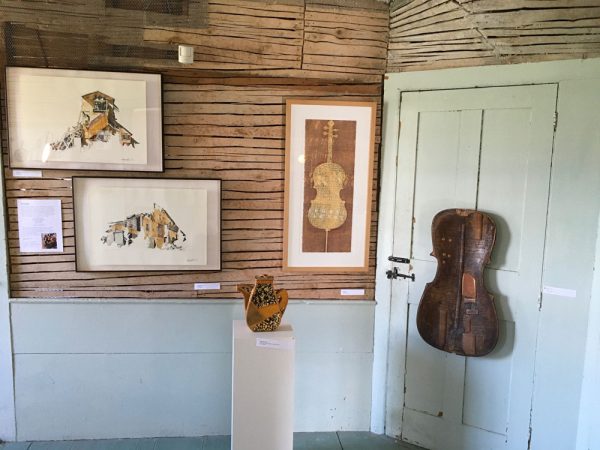
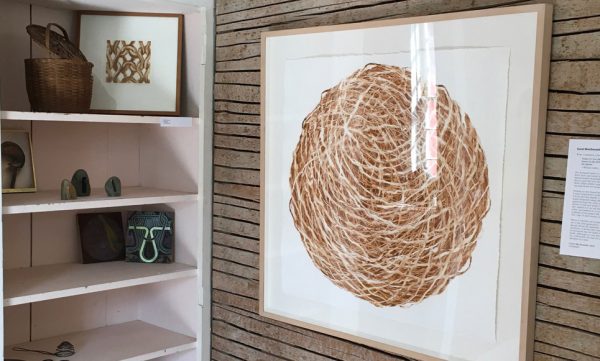
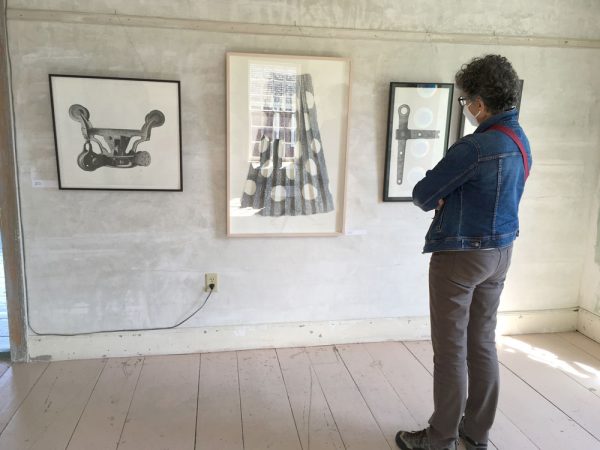
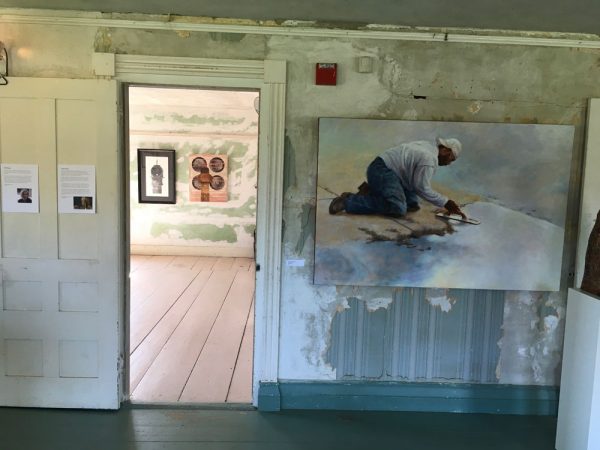

Installation
After seeing my Woven Fence at the Rokeby Museum last year, the curators asked me to create an outside installation. In looking around the property, I was drawn to a cedar grove. For the last two or three years I have been knitting and printing pieces with big holes in them. I made a series of prints where I overlayed the knitting so that at they created portholes into what was beneath. The holes related to the feeling of isolation and social distancing that we have been experiencing through the pandemic. I thought about suspending these knit pieces into the crooks of trees thus making portholes into the woods.
As it was coming into the fall I decided to use orange, yellow orange and red polyester rope. I had used the same rope at the Rokeby Museum in 2020. I also wanted to bring more light into this relatively dark grove. The knitting was fun as I worked with large #35 needles. I had measured each crook and made patterns so was able to knit to spec.
It took three days to install the pieces. Installation is a relatively new form of working for me. Making visual conversations and relationships between the trees and knit pieces was exciting.
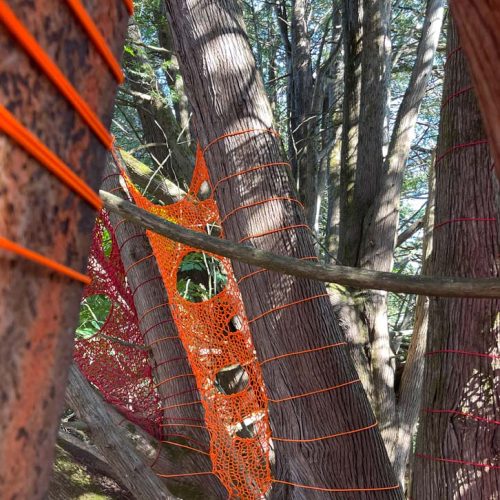
After it was done, David Schutz told me that the cedar grove was planted, where the old shoemaking shop had been, after the building was torn down! I love it when my intuition leads me.

The other tree that called out for a piece was the apple tree that had been recently pruned. I wanted to bring red into the tree which was devoid of apples.
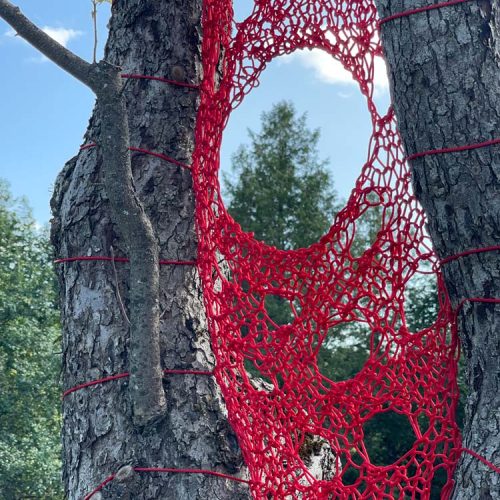
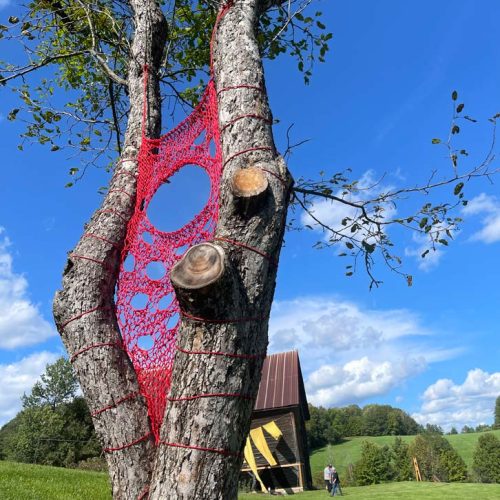
If you are able to visit the show information can be found at kentscorner.org. It is open Friday – Sunday through October 10th, 2021 from 10 – 5 and by appointment. Free tickets are required and can be arranged through the website. It is worth the drive especially as the foliage in Vermont brightens and changes. For those of you who cannot get there, I hope this post gives you a peak into my process and a chance to experience some of what this exhibition has to offer.

